We’ve heard about AI-generated marketing copy. We’ve heard about AI-generated video platforms. If AI can generate your marketing copy and turn your blog posts and web pages into polished videos, what else can it do? It can create marketing images, too—and it can do it for free. There are many free AI image generators out there. Let’s take a look at the output and responsiveness of three popular platforms: Imagine Art, Wonder Ai, and Dall-E.
Unlike AI copy generators, whose purpose is to help you generate professional sounding copy faster than a human being can do, AI art generators are promoted as being able to generate images that reflect your imagination. Say you can’t find just the right image for that project. You should be able to tell an AI image generator to create it for you, right?
After experimentation, the answer is “sometimes.” Already, stock image companies like FreePik are adding AI-generated images to product offerings. If you go to FreePik and select the category of “AI images,” you’ll find everything from a Malaysian woman placing bananas on her market stand to a bright, cheery image of grandmother and her granddaughter goofing for the “camera.”
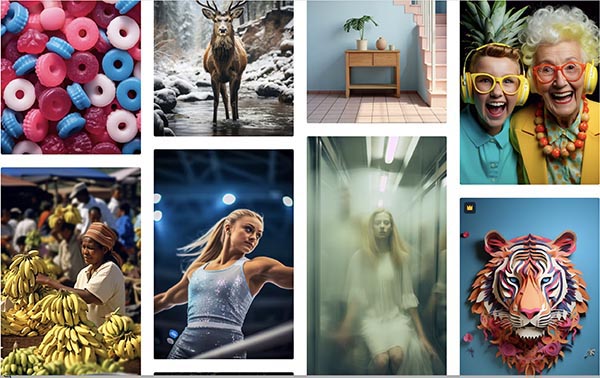
If you search for specific images—say a multi-ethnic team sitting around a conference table—these AI-generated images do quite well. Here is a selection of images from FreePik’s AI collection:
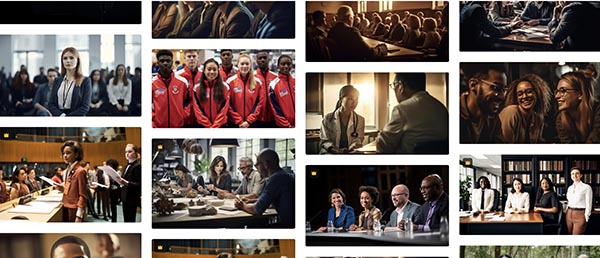
But we wondered. Could we create these images ourselves? We signed up for all three platforms. Imagine.art and Wonder.ai offer free versions. Dall-E requires the purchase of credits, which started at only $15. We used these platforms to generate our own images of “a multi-ethnic team sitting around a conference table having an intense discussion.”
We started with Wonder.ai. Instructions were to use specific phrases separated by commas, so we used the following prompt: “image of a multi-ethnic staff sitting around a conference table, they are having an intense discussion.”
The platform generated two images. The first was a graphic:

Source: Wonder.ai
The second was a photo-realistic image:

Source: Wonder.ai
Next, we tried the same prompt with Imagine.art:

Source: Imagine.art
The first image included non-white team members, but the ethnicity was uniform. We didn’t pick up the sense of great intensity, either. So we tried the prompt again, being more specific this time: “Staff sitting around a conference table, they staff are from different ethnic backgrounds, they are having an intense discussion.”
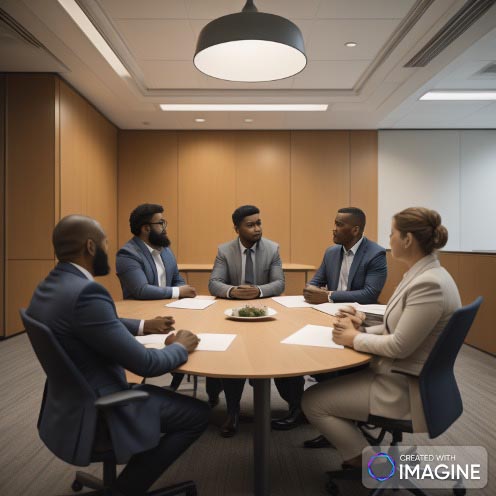
Source: Imagine.art
This time we got a little more ethnic variety, and the background wasn’t as stark. But we weren’t getting the truly multi-ethnic output we were looking for. So we got even more specific: “staff of people from different ethnicities sitting around a conference table, include people of African American, Asian, Middle Eastern, and European decent, they are having an intense discussion.”
Here's what Imagine AI output:

Source: Imagine.art
Certainly better. But what about the intensity of discussion? For that, perhaps we should ask for “arguing” instead:

Source: Imagine.art
If this is arguing, this is certainly a stoic bunch. Maybe they are arguing with their eyes.
So we tried again using Dall-E:
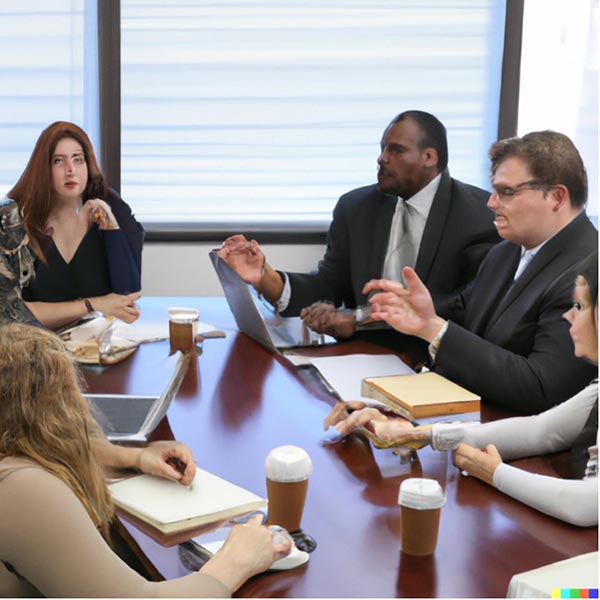
Source: Dall-E
We got a multi-ethnic group, although they looked a bit like they had been drawn by Picasso—and Dall-E still had trouble with “arguing.”
In all fairness, we tried asking for a multi-ethnic team sitting around a conference table, arguing, from the AI artists from FreePik, and we found that we were not alone. We got multi-ethnic teams, but it seems that either “multi-ethnic teams arguing” isn’t an in-demand subject, or these artists had trouble with getting the platforms to create these images, too.
To reflect our frustration, we decided in our final experiment to ask the AI art platforms to generate a graphic designer looking at her computer screen, frustrated, with her hands up in the air in exasperation.
We started with Imagine.art:
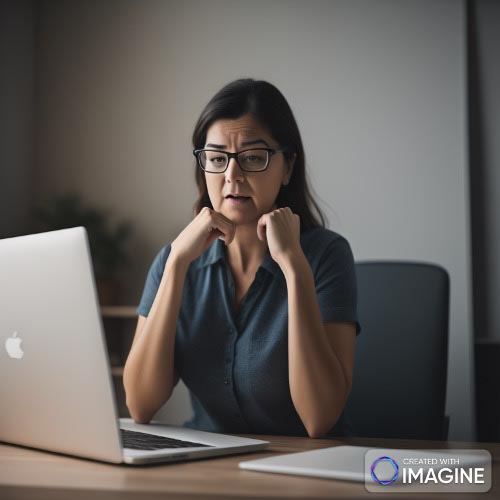
Source: Imagine.art
This image captures frustration, but we are missing the “hands in the air” exasperation we were looking for. So we tried again:
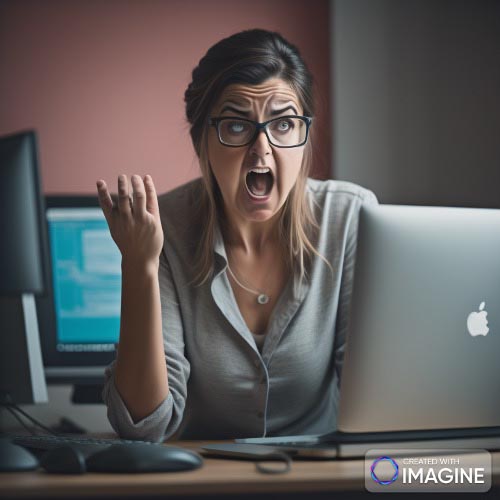
Source: Imagine.art
Now we have frustration, but there are a few features in here that are, frankly, creepy. Trying again...

Source: Imagine.art
Here we have the frustration and the hand in frustration, but the graphic designer is not looking at the computer screen, even when instructed to do so.
Next, we tried Wonder.ai:
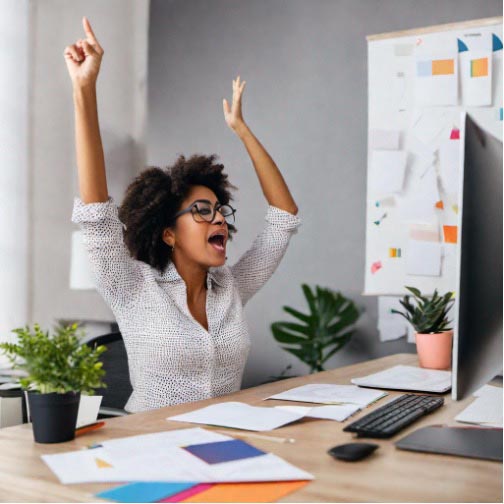
Source: Wonder.ai
Here again, we have two out of three: The graphic designer is looking at the screen, and her hands are up, but missing is the emotion of frustration.
Next, we tried Dall-E. This platform came the closest to capturing the desired emotion, but at a cost:

Source: Dall-E
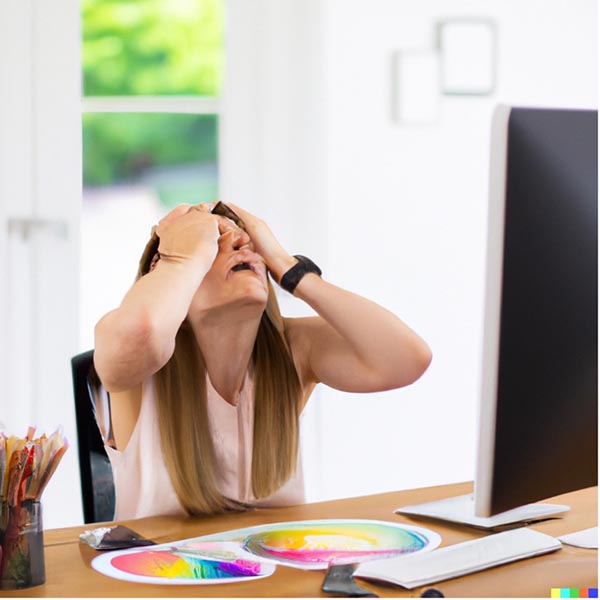
Source: Dall-E
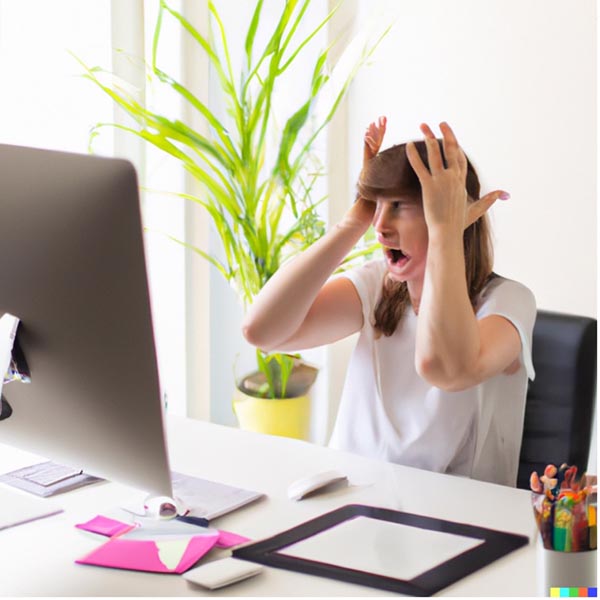
Source: Dall-E
Dall-E clearly captures the desired emotion, but the platform is known for the challenge it has with faces. Indeed, “messed up” faces are a well-known characteristic of the platform.
But the platform does do exceptionally well with conceptual images that don't involve people. For example, when Dall-E was asked to create an image of piles and piles of mixed trash along the shoreline of an island, it could have been an image out of the Getty archives:

Source: Dall-E
Likewise, it does fairly well if you want a generic artsy image of businesspeople walking the aisles of a commercial printing trade show. Ask, and you’ll get something like this:
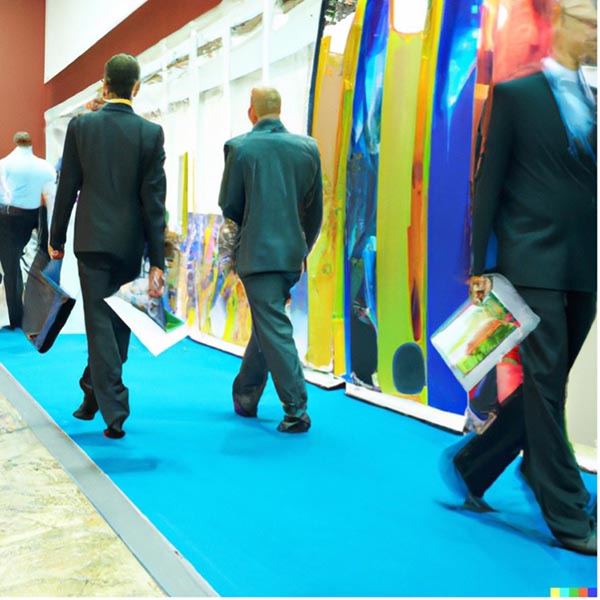
Source: Dall-E
Or an image of paper running through an offset press:

Source: Dall-E
The takeaway here is that these models do work. If you have the time to sit and play with them, and you match the right platform to the type of image you are looking for, you will find that different platforms work well for different things. Indeed, these images are being used to illustrate marketing content being used to members of this industry already, as illustrated by this image created for a print manufacturer’s blog post:

Source: Wise
So these platforms do work, but it’s important to experiment with multiple platforms and see what each one of them does best. Do some research on how to create effective prompts, and take the time to experiment. If one platform doesn’t create the image you are looking for, try another. Then another.
But if you want an image of a cat with sunglasses riding a skateboard in the waves next to a whale, maybe no experimentation is necessary. Dall-E knocks this one out of the park.
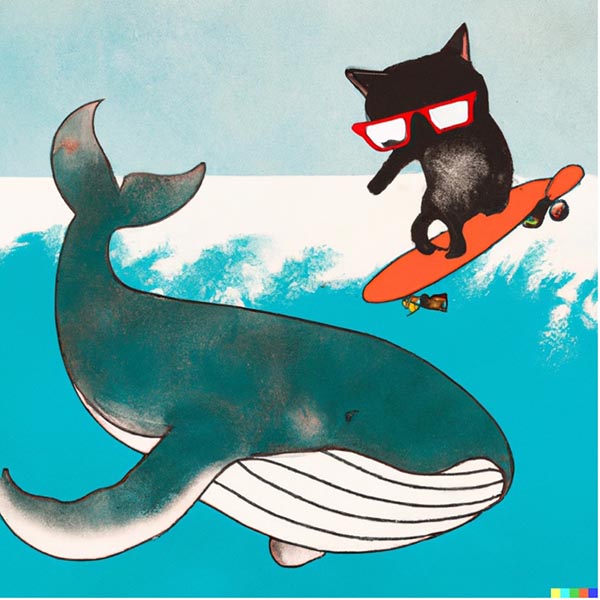










Discussion
Join the discussion Sign In or Become a Member, doing so is simple and free